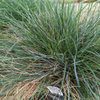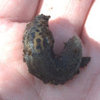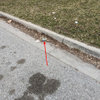Garden Consultant for Pest control organic way
carlos_martin
9 years ago
Related Stories

GARDENING GUIDESOrganic Matters: Thwart Insect Pests With Trap Crops
Add a few sacrificial plants to your garden to lure insects away from the harvest
Full Story
LANDSCAPE DESIGNErosion Control for Your Seaside Garden
Learn how to protect the soil and plants on your shoreline for a beach landscape that lasts
Full Story
INSPIRING GARDENSFrom Concrete Lot to Gracious Organic Garden in Seattle
Plants, pests and even weeds have a place in this landscape, which offers an edible bounty and a feast for the eyes
Full Story
WORKING WITH PROS17 Things Color Consultants Want You to Know
Dithering over potential palettes for your home? A color pro might be the way to go. Here's how it works
Full Story
GARDENING FOR BUTTERFLIES3 Ways Native Plants Make Gardening So Much Better
You probably know about the lower maintenance. But native plants' other benefits go far beyond a little less watering and weeding
Full Story
FALL GARDENING5 Ways to Put Fall Leaves to Work in Your Garden
Improve your soil and yard the organic way with a valuable garden booster that grows on trees
Full Story
GARDENING GUIDES9 Ways to Be Water-Wise in the Edible Garden
Consider these tips to get a healthy backyard crop that uses less water
Full Story
GARDENING GUIDESTackle Weeds the Natural Way
Instead of dousing your yard with chemicals to wipe out weeds, let time and nature work their magic via smothering and solarization
Full Story
EDIBLE GARDENSNatural Ways to Get Rid of Weeds in Your Garden
Use these techniques to help prevent the spread of weeds and to learn about your soil
Full Story
GRASSES10 Ways to Use Ornamental Grasses in the Landscape
These low-maintenance plants can add beauty, texture and privacy to any size garden
Full Story










Kimmsr
ronalawn82
Related Professionals
Londonderry Landscape Architects & Landscape Designers · New Bedford Landscape Architects & Landscape Designers · Beachwood Landscape Architects & Landscape Designers · Saint Louis Park Landscape Architects & Landscape Designers · Aberdeen Landscape Contractors · Azalea Park Landscape Contractors · Cockeysville Landscape Contractors · Desert Hot Springs Landscape Contractors · Fuquay-Varina Landscape Contractors · Lady Lake Landscape Contractors · Leicester Landscape Contractors · San Rafael Landscape Contractors · Waldorf Landscape Contractors · Whitehall Landscape Contractors · Hawaiian Gardens Landscape Contractorsronalawn82
carlos_martinOriginal Author
carlos_martinOriginal Author
ronalawn82
ronalawn82
ronalawn82
cunzun
ronalawn82
ronalawn82
ronalawn82
carlos_martinOriginal Author
carlos_martinOriginal Author
carlos_martinOriginal Author
carlos_martinOriginal Author
carlos_martinOriginal Author
Kimmsr
ronalawn82
Kimmsr